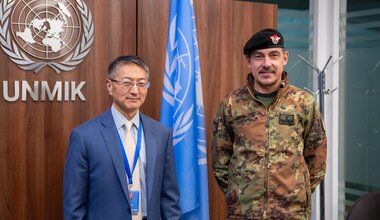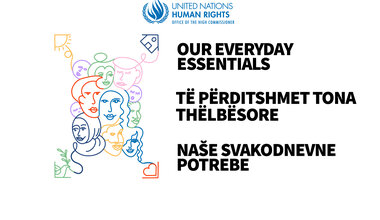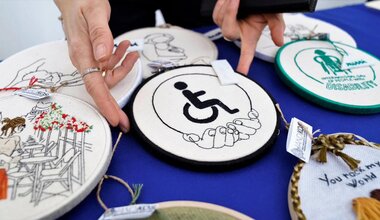Bridging the divide: Kosovo youth learn about themselves while exploring Kosovo’s four corners
Travelling the length and breadth of Kosovo, 15 young people from five different communities explored Kosovo’s cultural and natural diversity together on a journey to its four geographical corners.
“I can’t believe we have all of this on our doorstep, and yet most of us never discover the richness of Kosovo cultural diversity,” Anes Demirović, a 17-year-old K-Bosniak from North Mitrovica, said.
The 27-30 June visit was supported by UNMIK as part of its work on the UN’s Youth, Peace and Security agenda. UN Security Council Resolution 2250 was adopted in 2015 and acknowledges the “important role youth can play in the prevention and resolution of conflicts and as a key aspect of the sustainability, inclusiveness and success of peacekeeping and peacebuilding efforts”.
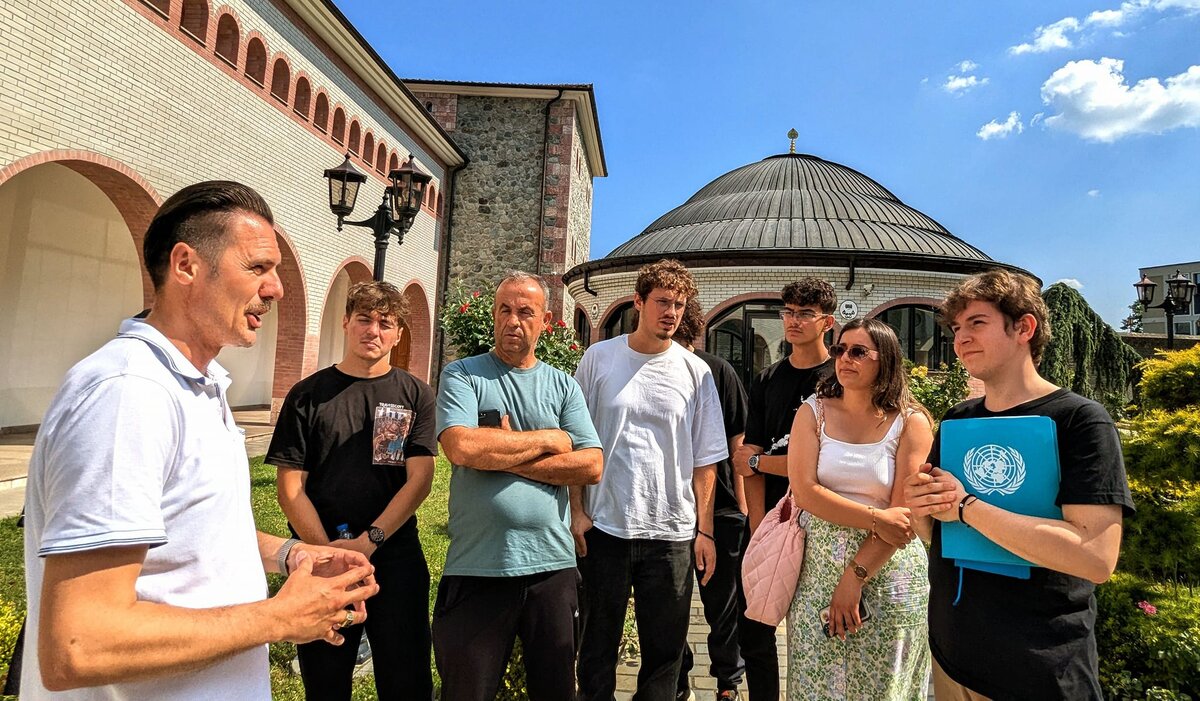
Adak Celina, a 17-year-old from Prizren, said he had learned so many new things about Kosovo and its history, but also about the other communities who inhabit it.
“I think this experience has helped me to understand those from other communities better and has eroded some of the mistrust that has been created.”
Similarly, Arjanita Shala, 20, from Pejë/Peć said this was the first time she had come into such close contact with members from other communities but the project instilled a sense of hope about what could be collectively achieved.
“I think our generation can and should come together to overcome the divides. We will never forget the past, but we should work together to have a future.”
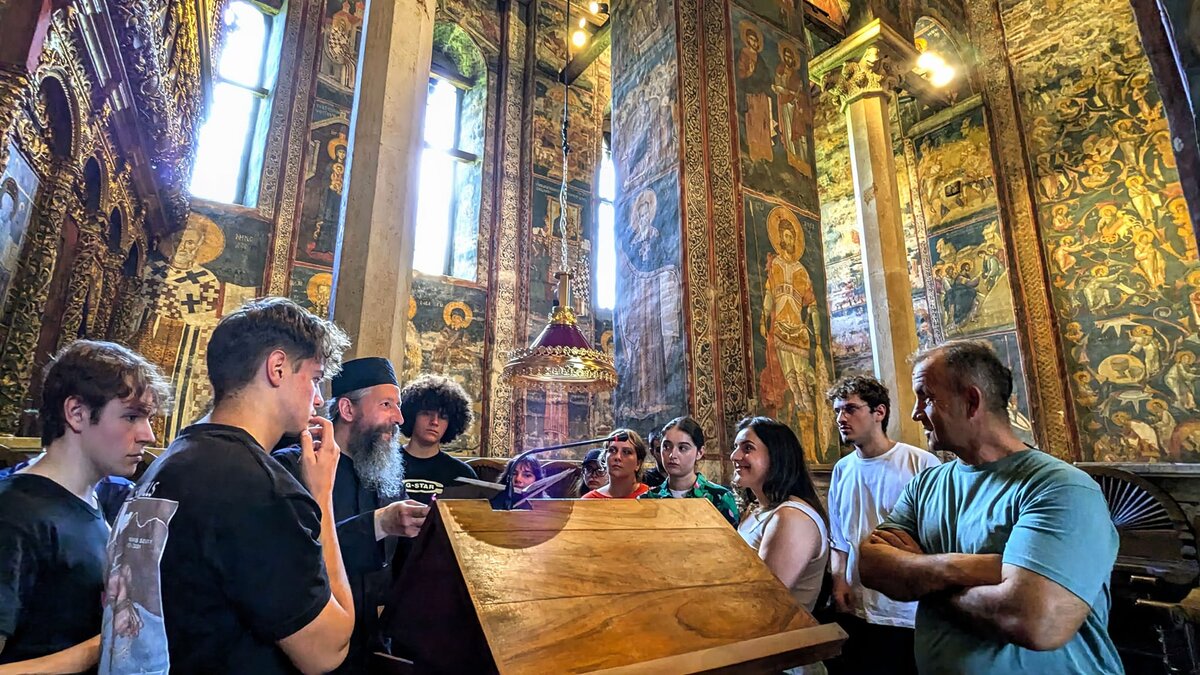
The visit by the group, aged between 17 to 24, started in Kamenica in Kosovo’s east at the municipal offices, where big strides are being made to prioritize youth inclusion in decision-making processes and inter-ethnic cooperation. The group also visited the Serbian cultural and artistic association Alternativna Kulturna Tendencija, where its director and local artist Slobodan Miljković presented various art pieces that put a spotlight on pressing social issues using both contemporary art and cultural street actions.
Day 2 saw a visit to the southern melting pot of Prizren, where the youngsters were welcomed by the first female head of the Municipal Assembly Antigona Bytyqi and Local Youth Assembly Turkish community representative Esra Çololar.
“We are so pleased to share our cultural heritage with our youngest generation and share with them stories of cross-community cooperation,” Ms Bytyqi said.
The group also embarked on an interfaith tour with resident civil society activist Berzat Berzati, with whom the participants explored a catholic church, an orthodox church and a mosque.
At the Catholic Church of Our Lady of Perpetual Succour, Hadia Abdelfatah was stopped in her tracks. Ms Abdelfatah, an international student at the University of Pristina’s Master’s Program in Human Rights, which is separate from the project but also supported by UNMIK, is from Cairo, Egypt. She was unexpectedly reunited with Sister Kune, whom she met in Egypt 10 years ago during an interfaith study tour that included a visit to Hadia’s university.
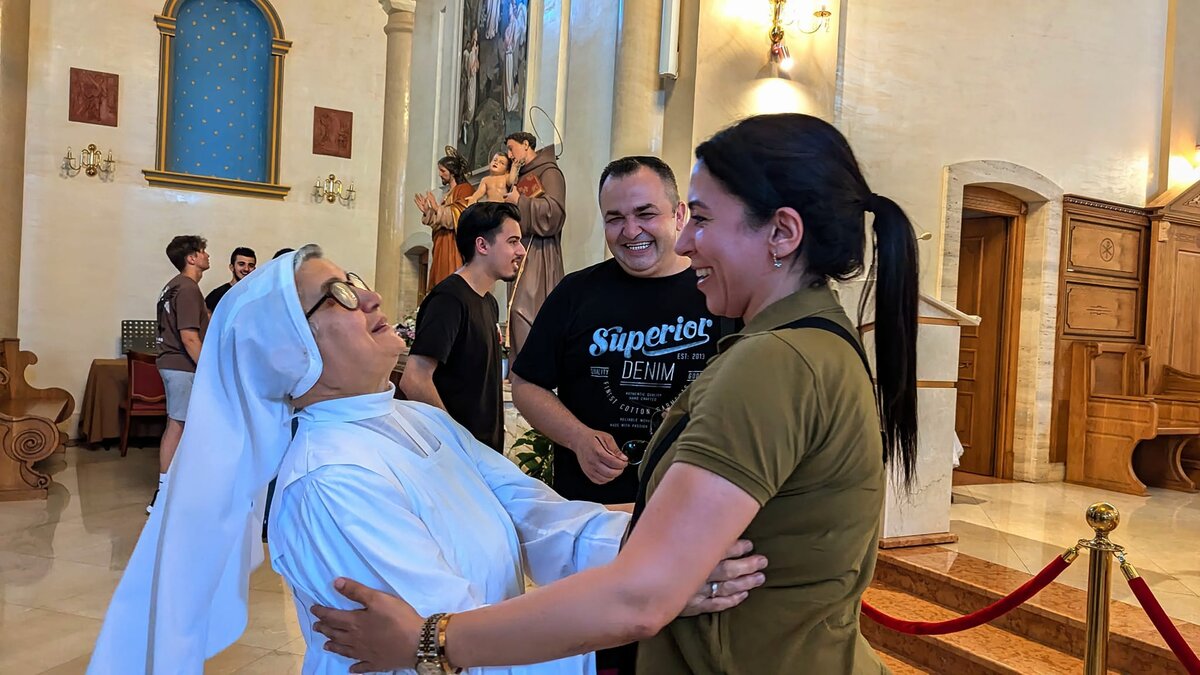
The following day, the group travelled to Kosovo’s west, to Junik and Deçan/Dečan, where they visited the Tekke of Sheh Xhafer and the Visoki Dečani Monastery.
At the Monastery, they were welcomed by Father Petar who spoke of the importance of intercultural learning and cultivating a sense of belonging.
“Visits like these, when young people come together to learn about each other’s cultural and spiritual traditions, are extremely important because they create mutual respect, empathy and better awareness of multiculturalism in Kosovo,” he shared.
The final day took the group north to Mitrovica, where they visited UNMIK’s regional office, jointly walked the ‘New Bridge’ and spent time at the Aquarius Gallery.
“In the north, youth spaces are limited and politicized. At Aquarius, we are so proud to offer a space of artistic self-expression that brings together freedom-loving individuals from both sides of the city, who work together to create bridges of understanding,” Aquarius artist Anđela Mirković said.
The project culminated with a visit to a vast symbol of togetherness. The Mitrovica Miners Monument sits atop ‘Miner’s Hill’ in Bogdanović as a stark reminder of the importance of unity over division. Created as a tribute to those whose lives were lost during World War II, it also commemorates the Albanian and Serbian miners who fought side-by-side to keep fascism at bay.
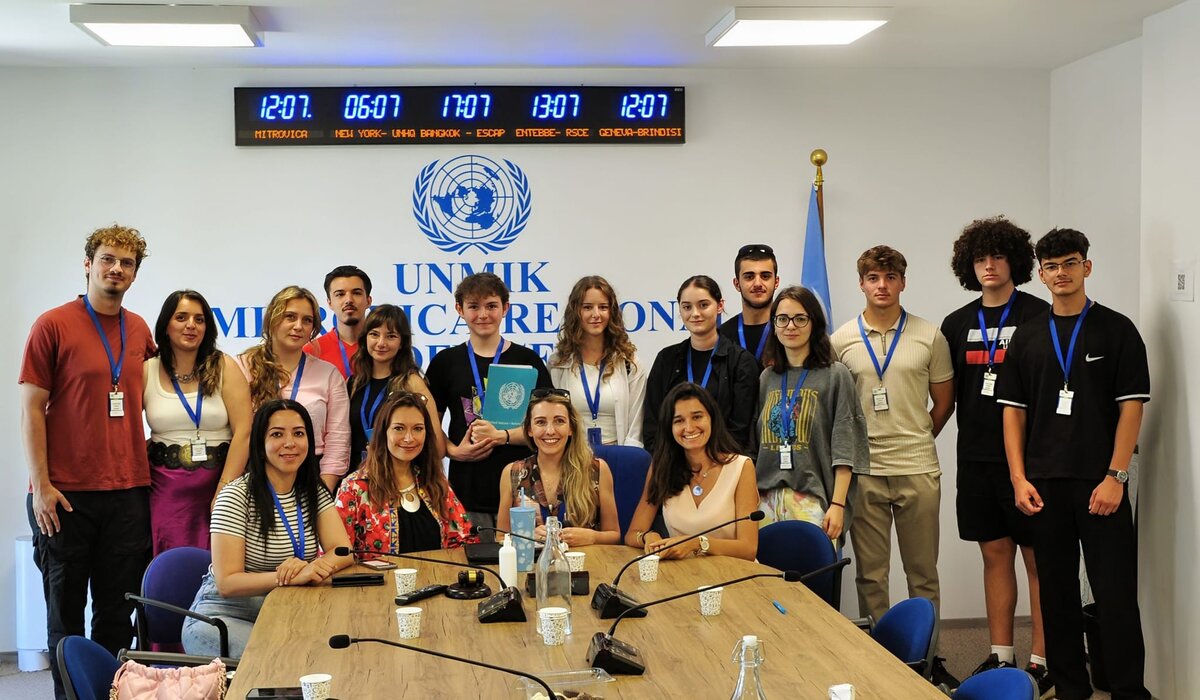
 UN
UN United Nations Peacekeeping
United Nations Peacekeeping


